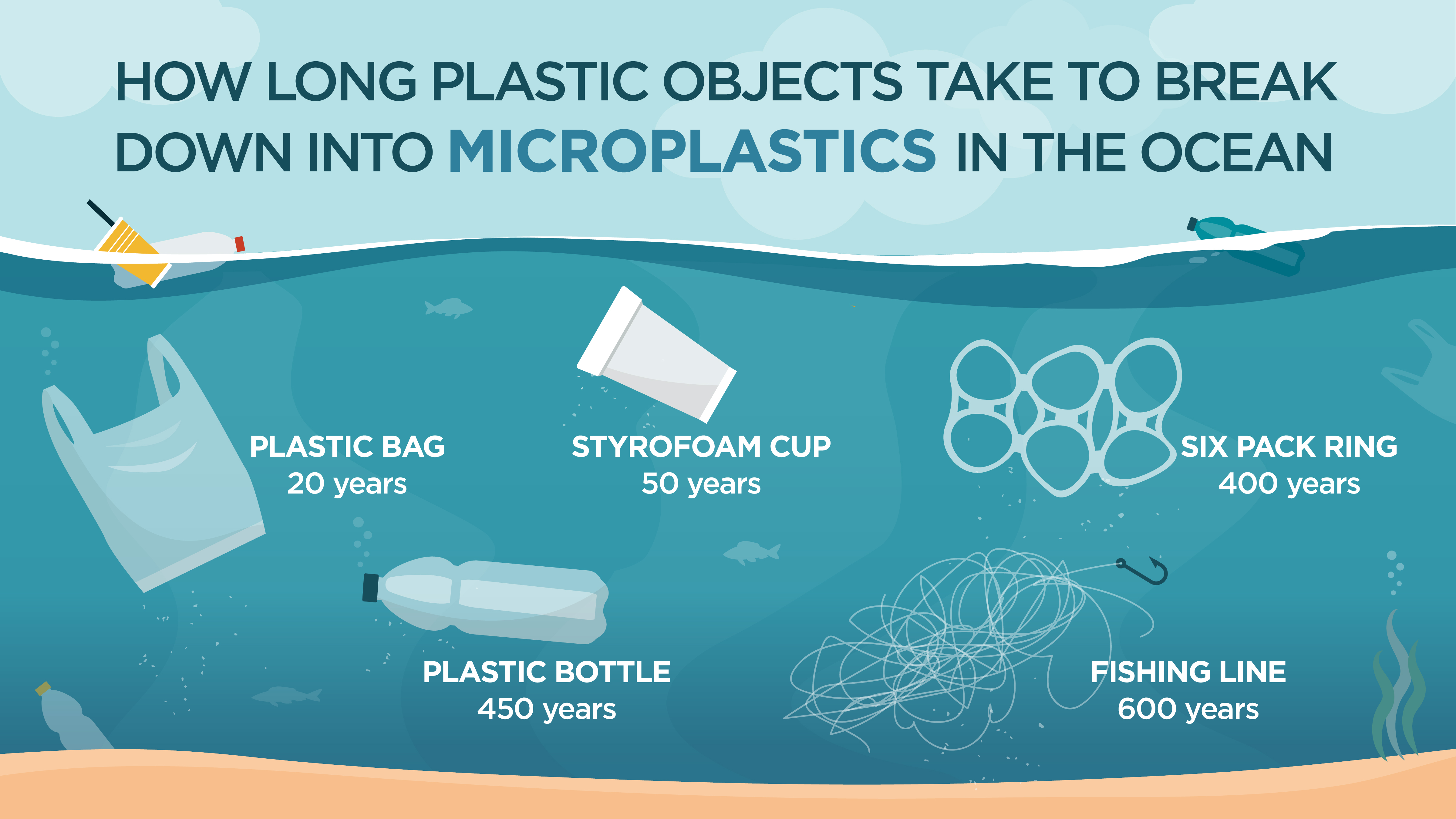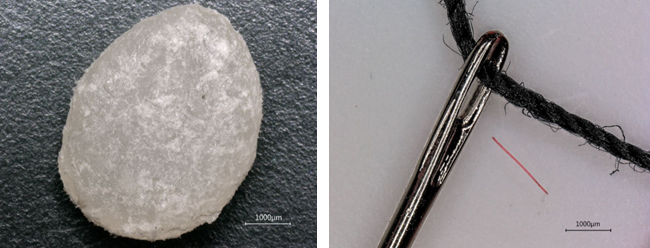Breaking Bad: SC Johnson Looks to Design More Products for Plastic Circularity to Turn the Tide on Microplastics
The Blue Paradox exhibit on the plastic pollution crisis at the Museum of Science and Industry in Chicago is a great place to immerse yourself in the ocean plastic crisis. Dramatic 360-degree digital projections, interactive technology and massive information walls provide an up-close look at the tens of millions of tons of plastic entering our oceans yearly. Being surrounded by an ocean loaded with huge pieces of plastic garbage like food wrappers, water bottles and grocery bags is an astonishing experience.
Scientists initially assumed that ocean plastic would float aimlessly in the water forever. However, that’s not the case. Surface water plastic only accounts for about one percent of what’s in the ocean. That’s because plastic waste is constantly degrading, meaning that even something as big and buoyant as a milk jug will eventually break into tiny pieces that sink slowly to the bottom. Pieces less than five millimeters long – and which aren’t visible to the naked eye – are known as microplastics.

Out of sight, but not out of mind
Microplastics are a significant concern because once they enter the environment, they can persist for long periods and build up in ecosystems, creating potential risks to wildlife and human health. An analysis by the Worldwide Fund for Nature found that plastic waste has already negatively impacted almost 90% of marine species. Moreover, when microplastics enter a waterway, they can accumulate in the marine food chain – including in the fish that humans eat.
There is evidence that this is already happening. A recent study in Amsterdam found high levels of plastic in human blood. Another one in Italy found it in human breast milk. A third one in Spain detected it in people’s lower respiratory system. Even more unsettling is that it’s still unknown how long microplastics linger in our bodies or whether they hang around long enough to do damage.
Removing microplastics already in the environment is proving to be pretty much impossible – the plastic particles are small and varied by definition, and the areas where they are being found are vast. One thing we can do, however, is try and stop them at the source by reducing the flow of plastic waste into the environment.

The path forward: Designing for the circular economy
According to the United Nations, shifting to a circular economy can reduce the volume of plastics entering oceans by over 80 percent by 2040. The Ellen MacArthur Foundation also estimates that 80 percent of a product’s environmental impacts are determined when it’s being designed. So making design and manufacturing changes to support a circular economy is a crucial action companies can take.
For example, SC Johnson replaced its flexible pouch refills for method® dish soap - which was made up of a combination of materials that made them unrecyclable - with rigid HDPE durables widely accepted by recycling programs. They’ve also started removing carbon black plastic from Mrs. Meyers® iconic packaging design because optical sorting systems used at many recycling plants can’t pick out the black pigment in black plastic. These innovative changes increase their ability to enter the recycling stream rather than end up in the landfill.
Encouraging refills and reuse across product segments is another key to supporting a circular economy. Refills eliminate up to 80% of plastic use associated with purchasing a new ready-to-use product. And reusing spray triggers, which comprise over 30% of the package weight, is estimated to reduce 400 metric tons of plastic annually.
SC Johnson has long championed refills, starting nearly a decade ago with a Windex® concentrate and expanding to include Scrubbing Bubbles®, Mr Muscle® and others. SC Johnson trigger bottles are designed to deliver more than 10,000 sprays, meaning they can be refilled and reused dozens of times. This focus on enabling bottles, triggers and other components from previously purchased products to be used again extends their lifespan beyond a one-time use, keeping additional plastic out of the waste stream.
A reason to be optimistic
To be clear, addressing the plastic waste crisis includes systemic changes beyond a single solution or the efforts of any single company. The world is producing twice as much plastic waste as two decades ago, with the bulk of it ending up in landfills, incinerated or leaking into the environment. Currently, only a fraction of the plastic produced gets recycled: about 5 to 6 percent in the United States and about 9 percent worldwide. And while some countries have well-established recycling programs, many do not have the resources or infrastructure to manage plastic waste properly. Much like the Blue Paradox experience, being immersed in all the challenges to overcome can create a sense that saving our oceans may be hopeless.
But that’s not the case. When the Blue Paradox first ran as a pop-up experience in London in 2021, 97 percent of attendees left saying they planned to change their behavior for good. It indicates a growing sense of urgency and a willingness to take action. Corporate responsibility is becoming more front and center for businesses and retailers. Governments are facing more pressure to act. And consumers are becoming more engaged and receptive to making changes necessary to reduce waste.
All that is cause for considerable optimism because it will take businesses, governments, and individuals coming together to stop plastic from becoming pollution in our oceans and waterways. It starts with making big progress on meaningful actions – which will go a long way toward turning off the tap of tiny microplastics that are swamping our oceans and waterways.